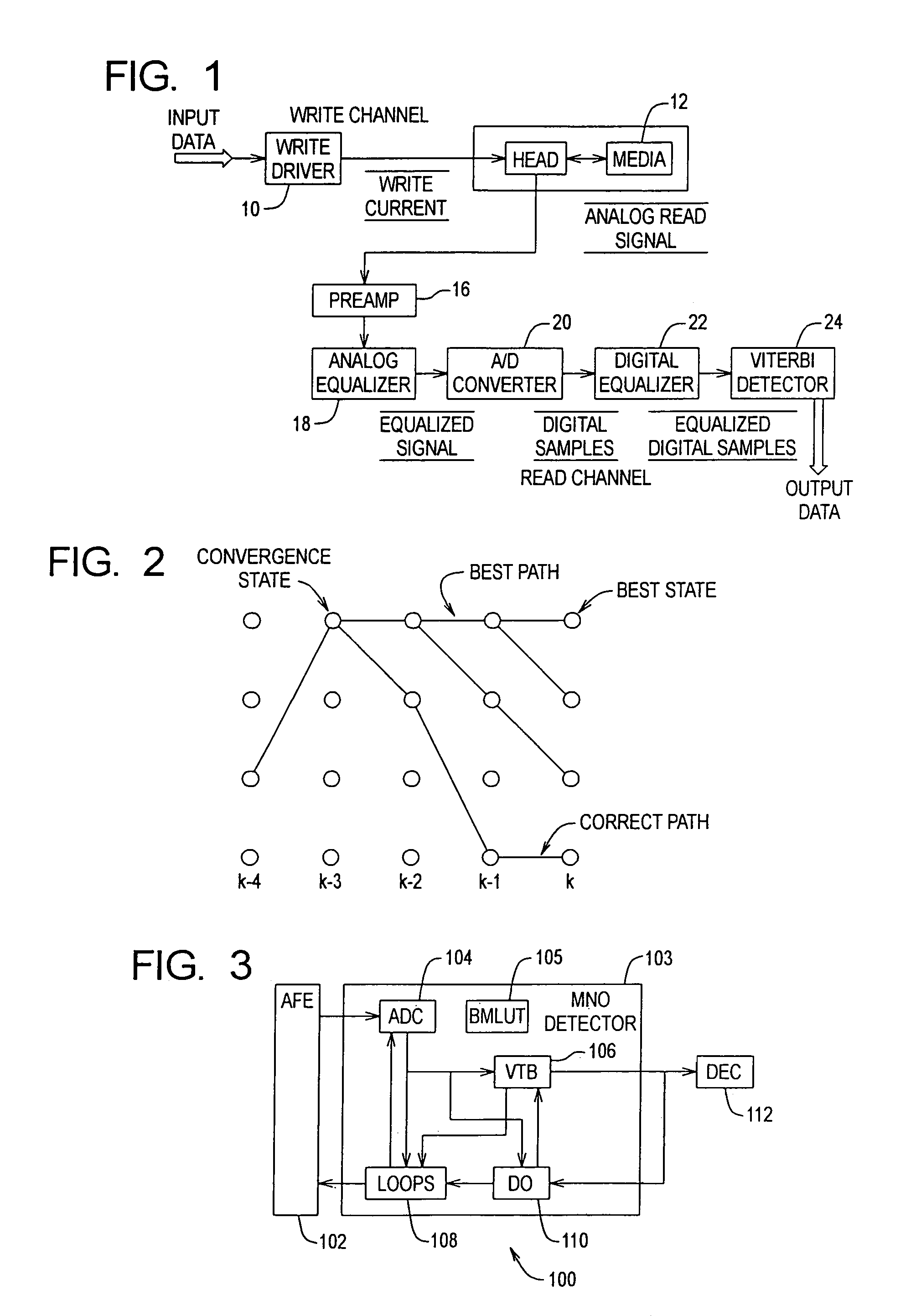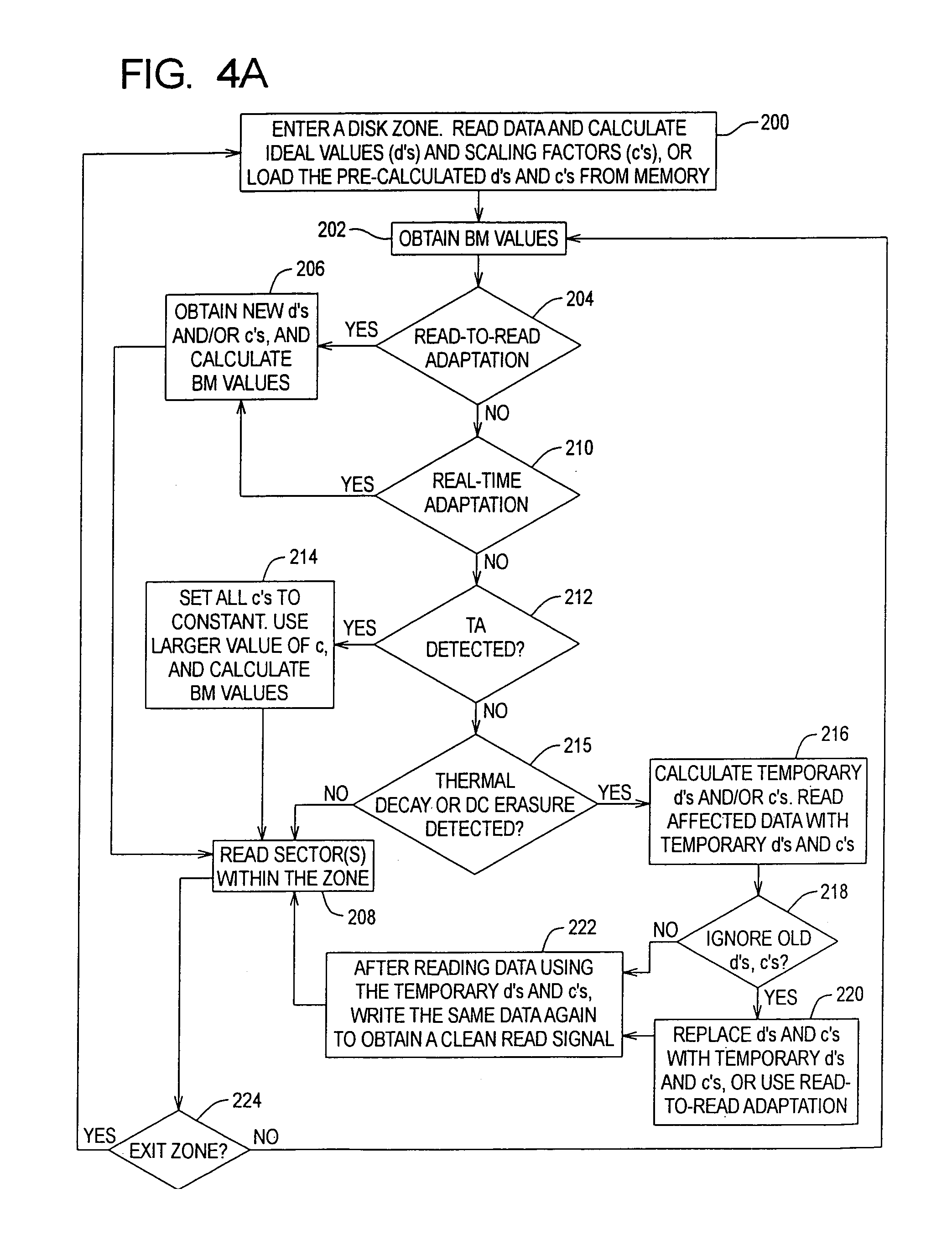Media noise optimized detector for magnetic recording
a detector and noise technology, applied in the field of digital data storage technology, can solve the problems of less space between flux transitions on the media, less data back reading, and unsatisfactory magnetic recording channels, and achieve the effects of significant disk drive yield benefits, cost savings, and performance gain of mno detectors
- Summary
- Abstract
- Description
- Claims
- Application Information
AI Technical Summary
Benefits of technology
Problems solved by technology
Method used
Image
Examples
Embodiment Construction
[0024]FIG. 1 is a simplified block diagram illustrating the principal building blocks of a magnetic recording and read channel used in a disk drive. In the example PRML channel, user data is encoded using a run length limited (RLL) code, such as RLL (1,7) or RLL (0,4 / 4), the latter providing a ratio of user data to stored data of about 8 / 9. The encoded series of bits are input to write driver 10 which controls a write current applied to a write head carried on a slider over a rotating magnetic disk media 12. The write driver 10, in combination with the write head, records the data as a series of magnetic flux transitions on a selected track on the media 12. For example, a “1” is represented as a transition and a “0” as no transition.
[0025]During a read operation, the read head provides an analog read signal responsive to the flux transitions as the data track moves past the head. The analog read signal is input to a preamp 16 and then to an analog equalizer 18. The analog equalizer ...
PUM
| Property | Measurement | Unit |
|---|---|---|
| noise variance | aaaaa | aaaaa |
| magnetic fields | aaaaa | aaaaa |
| LMS step size | aaaaa | aaaaa |
Abstract
Description
Claims
Application Information
 Login to View More
Login to View More - R&D
- Intellectual Property
- Life Sciences
- Materials
- Tech Scout
- Unparalleled Data Quality
- Higher Quality Content
- 60% Fewer Hallucinations
Browse by: Latest US Patents, China's latest patents, Technical Efficacy Thesaurus, Application Domain, Technology Topic, Popular Technical Reports.
© 2025 PatSnap. All rights reserved.Legal|Privacy policy|Modern Slavery Act Transparency Statement|Sitemap|About US| Contact US: help@patsnap.com



